Marketing Research Paper on Issues Encounter by Malaysian Tourism
Question
Task: Write a marketing research paper considering the problems encounter by Malaysian tourism over the last years.
Answer
Introduction and Research Background
Problem Statement
The tourism sector of any nation is one great source of revenue generation for any nation and Malaysia is no such exception. Malaysia tourism sector although is struggling hard for the last 3 years to maintain its steady growth in terms of travellers and revenue generation. Drawing back to the statistical considerations for the last 3 years, it can be observed that the nation is having hard times in terms of tourists’ footfall. Hence, Malaysian Tourism has been encountering one grave and challenging situation with less global tourists coming there for tours’ purposes. This issue is only getting severe with each passing year as the number of overall global tourists is only declining for the last 3 years. As per the statistical assumption, global tourists' arrival declined to 26.76 million only in 2016. 2017 and 2018 only saw a further decline in tourists' arrivals with 25.95 and 25.83 million. Considering more data from "my tourism" website of Malaysia, it is evident that such a drop in tourists' number was contributed largely by 14.6% reduction of Singapore tourists' arrival. In 2018 only 10.62 million tourists from Singapore visited Malaysia whereas in 2017, the number was approximately 12.44 million. The declining percentage thus is quite vivid and shocking. China is another prime nation from where a huge number of tourists come to visit Malaysia each year. Last year there had also been high concern regarding China tourists. China-based tourists also stopped visitingMalaysia like the previous years and all such fewer tourists' footfall is causing a huge impact over the Malaysiantourism sector. The government is losing huge money through the tourism sector as fewertourists mean lesser revenue generation. The local Malaysian people who depend at large on the tourism sector also saw a decline in their income. Moreover, the constant stance of tourists’ number decline also needs utmost focus as it can get worsen with the upcoming years. MATTA “Malaysia Association of Tour and Travel Agents” have also apprehended their ongoing concerns about this problematic situation and they are thinking of pull factors for re-attracting global tourists to visit Malaysia lie before(Ahmad, 2019).
Research Objectives
The generic objective for this overall research paper is as follows:
- To understand the present issues and future possibilities of Malaysian tourism The specific objective for this concerned research paper whereas is outlined below:
- To identify the pull factors which can make Malaysia a more favorable tourists destination to global visitors and upheld its present shortcomings
- These objectives do have direct linking with the above-stated research problem. It is because the present-day drawbacks of Malaysian tourism are needed to be identified along with outlining better strategies to pull more tourists in upcoming days.
Literature Review
Theoretical Framework
Expectation-Disconfirmation or alternativelyExpectation-Confirmation theory can be considered as one cognitive theory which tries to explain the post-adoption or post-purchase users’ satisfaction quotient to the beliefs’ disconfirmation, perceived performance and expectations (Buliahet al., 2018). This considered theory includes four main constructs namely Perceived performance, satisfaction, beliefs’ disconfirmation and Expectations. Expectations can be considered as the thinking or beliefs of the users before using or purchasing any service or product. The actual and real-life performance level of the purchased or used service and products although can be considered as the perceived performance. Beliefs’ disconfirmation is the stage where the users evaluate their pre and post-usage experiences. The user satisfaction level in terms of the tourism sector is directly related to the repetitive visit and destination loyalty contexts (Kim et al., 2019). Only by offering the desired perceived performance to the tourists, they will be visiting the place again and again.
“Plog’s model of tourist behaviour” although classified three typed tourists namely the Wanderers, the Repeater and the Midcentric. The wanderers are the tourists who want the latest adventures and experiences for often and they like to know various cultures and people (Cruz-Milan, 2018). The repeater although are less adventurous and they prefer good staying and food trail accommodation and like to repeat their travel destinations. The Midcentric are although the combination of both these types (Moreno et al., 2017). The context of Malaysian tourism ministry hence should focus on all these typed tourists’ behaviour to satisfy all their varied needs.
Secondary Empirical data
As opined by Abdullah and Lui, (2018), the tourism sector of Malaysia can be positioned to be one of the most prominent drivers to the nation's economy. The recent slower growth in tourism industry although is losing the Malaysian tourism sector's competitive advantage and income creation contexts. Satisfaction is the prime driver to appeal the international tourists to the repetitive visit to Malaysia. Cham et al., (2020), had although opined that over the last some years, medical tourism has grown much in Malaysia. The social factors as social media and WOM as well as nation-specific factors as accessibility, price reasonableness, security and safety and country knowledge act as the major predictors of Malaysia's image as a medical tourist destination. The global tourists’ expenditure on shopping and transportation also contributes at large to the local Malaysian economy (Amir et al., 2016). For tourism literature, the concept of motivation stimulation among the visitors is one significant aspect for generating the intention of revisit and impacting perceived value. Only through full customer satisfaction, Malaysia can attain the context of destination loyalty within its targeted visitors (Shukoret al., 2017). Nadarajah and Ramalu,(2018), although had focused upon some other major determinants of visitors’ repetitive visit stance to Malaysia. The perceived value, service quality, trusts and destination loyalty are some prime quotient which indulges revisit mindset within global tourists. Malaysia’s image as one destination although includes outcomes and antecedents. The antecedents consist of the credibility of destination source and cultural values whereas the outcomes include destination satisfaction, destination attachment and the revisit intention (Kaniet al., 2017). Aziz et al., (2018), had although find out that motivation differs much within varied socio-demographic levels of tourists in terms of their incomes and genders.
Research Design and Primary data
Population and Sample
For gathering the primary data for this considered research paper, total 50 samples had been considered. That means one survey had been initiated over the 50 population. These populations are tourists from random places. The random probability sampling technique had been used therefore (Sharma, 2017). It was mainly because, the research wanted to attain the varied opinions and expectations from Malaysian tourism. The researcher although had been particular about one characteristic of the population and it was that the 50 population must be the tourists in Malaysia (Geraghtyet al., 2019). As this considered research paper is on the present drawbacks of Malaysian tourism and proposing some pull factors for re-attracting global tourists, only the tourists could be the most suitable samples for the survey. Thus through the considered sampling technique, the innate demand, expectations and satisfactory quotient of the global tourists could have been understood so that the Malaysian tourism can use them as pull factors.
Data Collection Method
The method of data collection for this considered research paper had been Primary Quantitative. That is why one survey had been outlined and a good number of samples had been engaged in that survey (Cyr, 2016). The direct opinions of the samples had thus been measured on statistical terms. The research had been conducted in Malaysia. It is because the research had been about Malaysian tourism therefore the survey should have been demonstrated on a realistic basis. That is why Malaysia was chosen as the survey destination. One questionnaire had been made at the very first for the survey. The questionnaire had both close-ended and like-art scale typed questions and each of these questions was asked to total 50 samples (Basias and Pollalis, 2018). The questions had been framed on the better offerings that Malaysian tourism sector can offer to the global tourists and the tourists will be asked directly about their choices. Hence, from the opinions and expectations of the samples, the desired pull factors will be outlined for Malaysian tourism so that it can overcome the tourist decline issue very soon.
Measurement
This considered research had been outlined for measuring the present and future context of Malaysian tourism. The research paper had at first tried to understand the present-day scenario of Malaysian tourism whether it is able to generate enough tourists’ satisfaction context or not. Then it had demonstrated one critical evaluation on the present context of tourist satisfaction, revisit intention and destination loyalty contexts. Some pull factors then will be proposed for Malaysian tourism through which it can mitigate its tourists; decline issue and can appeal more global tourists to visitMalaysia.
Findings and Data analysis
Which factors do you feel can make Malaysian Tourism more appealing to global tourists?
|
Factors |
Answered |
|
Travel and adventure events |
15 |
|
Local culture and history |
10 |
|
Food trails |
20 |
|
Others |
05 |
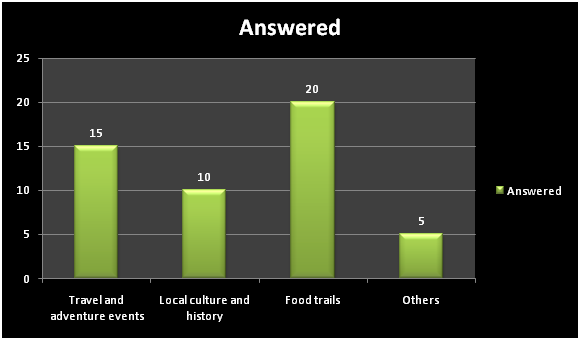
It is quite evident from the above result that food trails, promoting more of the local historical and cultural venues and arranging more adventure events can act as pull factors to draw the attention of more global consumers toMalaysia (Wang et al.,2020). How do you feel that Malaysian tourism can fulfill the perceived performance for global tourists?
|
By focusing more on the marketing |
25 |
|
By ensuring tourists about the safety |
15 |
|
By arranging more technology-based tourism experience |
10 |
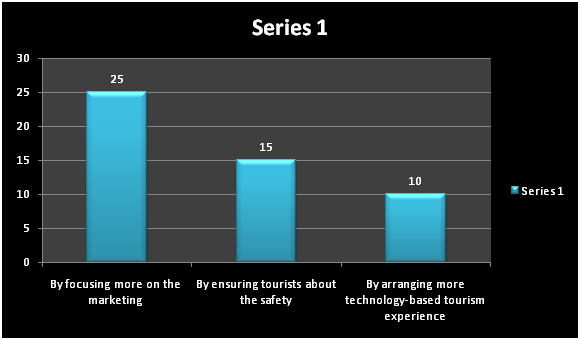
The tourists thus should be more assured about their safety by better marketing channels and they should also be offered more virtual reality typed advanced tourism experience.
How far do you agree that Malaysian tourism should offer easier customs and immigration accessibility to attract more global tourists?
|
Factors |
Answered |
|
Agree |
15 |
|
Disagree |
10 |
|
Natural |
05 |
|
Strongly Agree |
20 |
|
Strongly disagree |
0 |
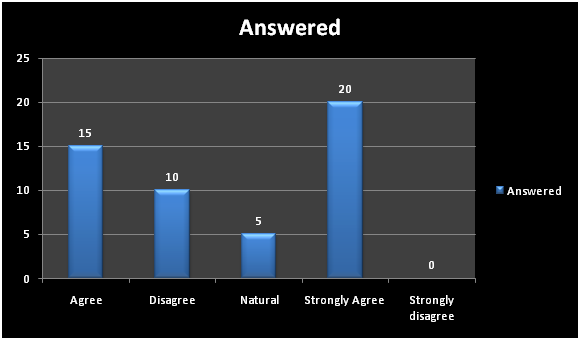
Most of the tourists feel that having less strict immigration and customs’ regulations can help to enhance global tourists’ footfall to Malaysia (Borzooieet al., 2019).
How much you feel that Malaysian tourism should offer more affordable travel experience to satisfy more global tourists?
|
Factors |
Answered |
|
Agree |
20 |
|
Disagree |
10 |
|
Natural |
02 |
|
Strongly Agree |
10 |
|
Strongly disagree |
08 |
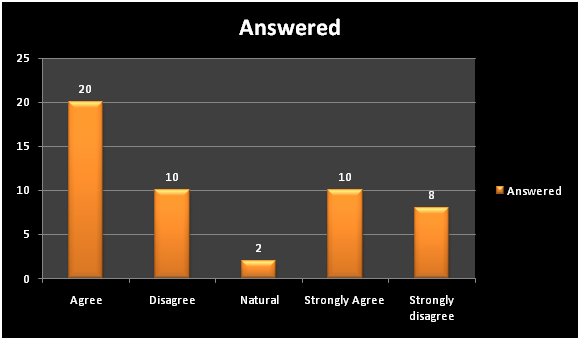
Most of the tourists being price-sensitive, Malaysian tourism hence can consider of offering rather affordable travel experience to tourists so that it can encounter more tourists’ footfall in future (Adams et al., 2017).
Do you feel that Malaysian tourism should implement more robust promotional and marketing campaigns for attracting the attention of international tourists?
|
Factors |
Answered |
|
Agree |
25 |
|
Disagree |
05 |
|
Natural |
05 |
|
Strongly Agree |
10 |
|
Strongly disagree |
05 |
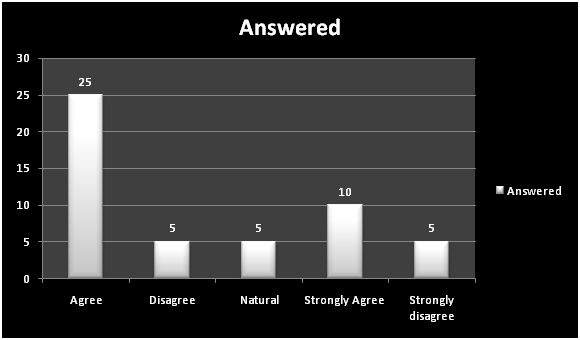
Most people think that the Malaysian tourism department should invest more in promotional and marketing drives to make more global tourists aware of Malaysia as one tourism destination (Boisenet al.,2018).
Do you feel that the Malaysia government should implement its local festivals and food offerings more to attract foreign tourists?
|
Factors |
Answered |
|
Agree |
20 |
|
Disagree |
10 |
|
Natural |
00 |
|
Strongly Agree |
16 |
|
Strongly disagree |
04 |
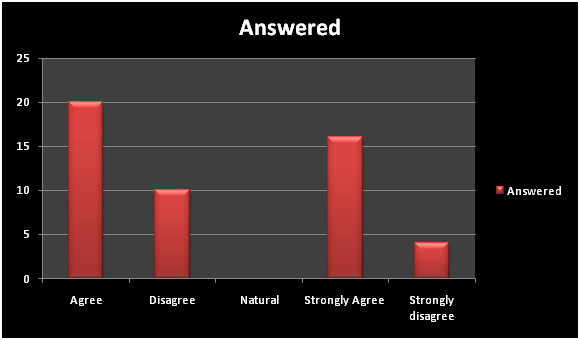
Offering local festivals and local foods can be beneficial and fruitful strategies to attract foreign tourists as they have high inclination to try out local cuisines and cultures (Joyner et al., 2018).
Limitations and Benefits of the proposed research
Managerial benefits of this research
This considered research paper has major managerial benefits as through this paper, the managers of the Malaysian tourism sector can obtain huge in-depth strategies for re-attracting the tourists from China, Singapore and other global destinations. Firstly, the managers can understand the severity of reshaping and remodeling Malaysian tourism’s present practices by the problem statement part. Then the survey findings presented in the above part can also give some direct opinion and preference of tourists. Thus the managers can understand the present-day requirements and expectations of global tourists and can severe such attributes to them.
Limitations of this research
This considered research paper also has some major drawbacks. The first shortcoming is regarding the considered sample size. Only 50 people had been sampled whereassampling more people might have provided vaster and more accurate datasets. It could have also helped to identify more relevant pull factors for drawing more global tourists.Then another shortcoming of this paper is considering less empirical papers. The present context of Malaysian tourism should have been portrayed on a more detailed manner so that more strategic direction could have been bestowed on it.
Conclusion
This entire research paper thus has presented one in-depth evaluation on Malaysian tourism. It had been found out quite clearly that the present context of Malaysian tourism is not so good and it is struggling hard to attract the desired number of global tourists for quite long. As the result, the overall number of tourists’ footfall is only declining for the last 3 years. Considering this situation, this present study paper had used both secondary and primary data for focusing more on Malaysian tourism. Secondary data and information on the Malaysian tourism sector's present practices and performance had been analysed. The findings helped to understand that the nation is in desperate need of more appealing and strategic pull factors to attract global tourists. The results of the survey also gave in-depth understanding on the various pull factors for drawing more visitors as better marketing, adventures, drawing consumers by local cultures, easycustoms and immigration access, food trail events and so on.
Reference List
Abdullah, S.I.N.W. and Lui, E., 2018. Satisfaction Drivers and Revisit Intention of International Tourists in Malaysia. Journal of Tourism, Hospitality and Environment Management, 3(9), pp.1-13.
Adams, K., Snyder, J., Crooks, V.A. and Berry, N.S., 2017. “Stay cool, sell stuff cheap, and smile”: Examining how reputational management of dental tourism reinforces structural oppression in Los Algodones, Mexico. Social Science & Medicine, 190, pp.157-164.
Ahmad, R., 2019. Putting the shine back in Malaysia’s tourism industry. Available at: https://www.thestar.com.my/news/nation/2019/03/22/putting-the-shine-back-in-malaysias-tourism-industry [Accessed on: 23.10.2020]
Amir, S., Osman, M.M., Bachok, S. and Ibrahim, M., 2016. Local Economic Benefit in Shopping and Transportation: A study on tourists’ expenditure in Melaka, Malaysia. Procedia-Social and Behavioral Sciences, 222, pp.374-381.
Aziz, Y.A., Hussin, S.R., Nezakati, H., Yusof, R.N.R. and Hashim, H., 2018. The effect of socio-demographic variables and travel characteristics on motivation of Muslim family tourists in Malaysia. Journal of Islamic Marketing.
Basias, N. and Pollalis, Y., 2018. Quantitative and qualitative research in business & technology: Justifying a suitable research methodology. Review of Integrative Business and Economics Research, 7, pp.91-105.
Boisen, M., Terlouw, K., Groote, P. and Couwenberg, O., 2018. Reframing place promotion, place marketing, and place branding-moving beyond conceptual confusion. Cities, 80, pp.4-11.
Borzooie, P., Lak, A. and Timothy, D.J., 2019. Designing Urban Customs and Border Marketplaces: A Model and Case Study FromLotfabad, Iran. Journal of Borderlands Studies, pp.1-18.
Buliah, A.L., Azmi, A., Aminudin, N., Abdullah, D. and MohdAsri, D.A.A., 2018. Tourists’ Shopping Expectation, Perceived Value and Shopping Satisfaction in Malaysia. Journal of Tourism, Hospitality & Culinary Arts (JTHCA), 10(1), pp.1-12.
Cham, T.H., Lim, Y.M., Sia, B.C., Cheah, J.H. and Ting, H., 2020. Medical tourism destination image and its relationship with the intention to revisit: A study of Chinese medical tourists in Malaysia. Journal of China Tourism Research, pp.1-29.
Cruz-Milan, O., 2018. Plog’s model of personality-based psychographic traits in tourism: A review of empirical research. In Tourism planning and destination marketing. Emerald Publishing Limited.
Cyr, J., 2016. The pitfalls and promise of focus groups as a data collection method. Sociological methods & research, 45(2), pp.231-259.
Geraghty, K., Hann, M. and Kurtev, S., 2019. Myalgic encephalomyelitis/chronic fatigue syndrome patients’ reports of symptom changes following cognitive behavioural therapy, graded exercise therapy and pacing treatments: Analysis of a primary survey compared with secondary surveys. Journal of health psychology, 24(10), pp.1318-1333.
Joyner, L., Kline, C., Oliver, J. and Kariko, D., 2018. Exploring emotional response to images used in agritourism destination marketing. Journal of Destination Marketing & Management, 9, pp.44-55.
Kani, Y., Aziz, Y.A., Sambasivan, M. and Bojei, J., 2017. Antecedents and outcomes of destination image of Malaysia. Journal of Hospitality and Tourism Management, 32, pp.89-98.
Kim, S.H., Bae, J.H. and Jeon, H.M., 2019. Continuous Intention on Accommodation Apps: Integrated Value-Based Adoption and Expectation–Confirmation Model Analysis. Sustainability, 11(6), p.1578.
Moreno, A.M., Los Santos, I.S. and Pascual, J.A.V., 2017. Proposal for a theoretical model for the analysis of the impact of cultural and personality factors on the demand for tourist services. ESIC Market. Economic & Business Journal, 48(2).
Nadarajah, G. and Ramalu, S.S., 2018. Effects of service quality, perceived value and trust on destination loyalty and intention to revisit Malaysian festivals among international tourists. Int. J. Recent Adv. Multidiscip. Res, 5, pp.3357-3362.
Sharma, G., 2017. Pros and cons of different sampling techniques. International journal of applied research, 3(7), pp.749-752.
Shukor, M.S., Salleh, N.H.M. and Idris, S.H.M., 2017. An evaluation of the effects of motivation, satisfaction on destination loyalty: case study tourism Malaysia. International Journal of Social Sciences and Management, 4(2), pp.137-147.
Wang, K.Y., Kasim, A. and Yu, J., 2020. Religious festival marketing: Distinguishing between devout believers and tourists. Religions, 11(8), p.413. ?
Appendices
Appendix 1: Filled Questionnaire of 5 samples
Sample 1
Which factors do you feel can make Malaysian Tourism more appealing to global tourists?
Travel and adventure events
How do you feel that Malaysian tourism can fulfill the perceived performance for global tourists?
By arranging more technology-based tourism experience
How far do you agree that Malaysian tourism should offer easier customs and immigration accessibility to attract more global tourists?
Disagree
How much you feel that Malaysian tourism should offer more affordable travel experience to satisfy more global tourists?
Agree
Do you feel that Malaysian tourism should implement more robust promotional and marketing campaigns for attracting the attention of international tourists?
Agree
Do you feel that Malaysian tourism should implement its local festivals and food offerings more to attract foreign tourists?
Agree
Sample 2
Which factors do you feel can make Malaysian Tourism more appealing to global tourists?
Travel and adventure events
How do you feel that Malaysian tourism can fulfill the perceived performance for global tourists?
By focusing more on the marketing
How far do you agree that Malaysian tourism should offer easier customs and immigration accessibility to attract more global tourists?
Strongly Agree
How much you feel that Malaysian tourism should offer more affordable travel experience to satisfy more global tourists?
Agree
Do you feel that Malaysian tourism should implement more robust promotional and marketing campaigns for attracting the attention of international tourists?
Agree
Do you feel that Malaysia tourism should implement its local festivals and food offerings more to attract foreign tourists?
Agree
Sample 3
Which factors do you feel can make Malaysian Tourism more appealing to global tourists?
Local culture and history
How do you feel that Malaysian tourism can fulfill the perceived performance for global tourists?
By focusing more on the marketing
How far do you agree that Malaysian tourism should offer easier customs and immigration accessibility to attract more global tourists?
Agree
How much you feel that Malaysian tourism should offer more affordable travel experience to satisfy more global tourists?
Agree
Do you feel that Malaysian tourism should implement more robust promotional and marketing campaigns for attracting the attention of international tourists?
Agree
Do you feel that Malaysia government should implement its local festivals and food offerings more to attract foreign tourists?
Agree
Sample 4
Which factors do you feel can make Malaysian Tourism more appealing to global tourists?
Local culture and history
How do you feel that Malaysian tourism can fulfill the perceived performance for global tourists?
By ensuring tourists about the safety
How far do you agree that Malaysian tourism should offer easier customs and immigration accessibility to attract more global tourists?
Agree
How much you feel that Malaysian tourism should offer more affordable travel experience to satisfy more global tourists?
Agree
Do you feel that Malaysian tourism should implement more robust promotional and marketing campaigns for attracting the attention of international tourists?
Agree
Do you feel that Malaysia government should implement its local festivals and food offerings more to attract foreign tourists?
Agree
Sample 5
Which factors do you feel can make Malaysian Tourism more appealing to global tourists?
Food trails
How do you feel that Malaysian tourism can fulfill the perceived performance for global tourists?
By ensuring tourists about the safety
How far do you agree that Malaysian tourism should offer easier customs and immigration accessibility to attract more global tourists?
Agree
How much you feel that Malaysian tourism should offer more affordable travel experience to satisfy more global tourists?
Agree
Do you feel that Malaysian tourism should implement more robust promotional and marketing campaigns for attracting the attention of international tourists?
Agree
Do you feel that Malaysia government should implement its local festivals and food offerings more to attract foreign tourists?
Agree












